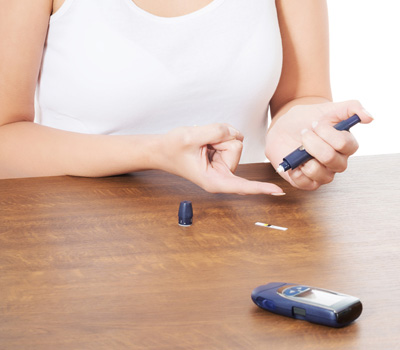Treatment of diabetes mellitus and its care in driving
The treatments are effective in preventing symptomatic hyperglycemia, diabetic ketoacidosis, or nonketotic hyperglycemic hyperosmolar coma.
Patient education is key to meet the treatment, recognize in what situations should seek medical advice immediately and perform the meticulous care of their feet.
It should be ophthalmology and cardiology evaluation each year, which can be advanced if symptoms arise or that it deems expert.
Hypertension, hypercholesterolemia and overweight, require special attention and appropriate treatment, the increased risk of specific complications in diabetics.
Table of Contents
Insulin treatment
IDDM treatment requires chronic administration of insulin. Patients learn to monitor glucose himself and adjust the dose depending on it.
IDDM patients also learn to identify ketone urine test strips, before any symptoms such as nausea, vomiting, abdominal pain or polyuria, as well as prevention, if symptoms of intercurrent disease, flu or common cold.
In the initial period of treatment with insulin, the patient requires strict control with a detailed explanation of the correct application and the responsibilities, prior to making the treatment individually and without danger in the development of common tasks including driving.
Complications of insulin treatment
- Hypoglycemia can occur for error in insulin dose, skip a meal, unplanned exercise or without apparent any cause. Mild hypoglycemia are frequent in diabetic patients, which learn to identify symptoms such as sweating, nervousness, generalized tremor, palpitation, confusion and visual disturbances, which usually respond quickly to take liquids or foods with sugar.
- Local Allergic reactions: often immediate pain and itching at the injection site followed after a few hours of local erythema, itching and induration, which may persist for several days occurs.
- Generalized allergy to insulin: It is rare. Symptoms usually occur shortly after injection and are characterized by urticaria, angioedema, pruritus, bronchospasm, etc. Treatment with antihistamines are usually sufficient, but often necessary use of adrenalin and glucocorticoids.
Oral hypoglycemic
The sulfonylureas are the most used, and within them, tolbutamide, chlorpropamide, tolazamide and Acetohexamide are the most frequent.
Treatment with sulfonylureas starts with a low dose, which is adjusted after a few days until a satisfactory or until the maximum recommended dose response.
The most important complication of treatment with sulfonylureas is hypoglycemia, and is seen more often in long acting as glyburide and chlorpropamide.
They are predisposing factors of hypoglycemia, advanced age, renal, hepatic and cardiovascular diseases, and eat less.
Sulfonylurea-induced hypoglycemia can be severe and persist or recur for several days after cessation of treatment, even in patients treated with tolbutamide, having a usual duration of 6-12 hours.
Advice about hypoglycemia
The driver must bear a visible place inside the vehicle the medical report of his illness with treatment, so that in case of an accident can be identified and treated properly.
A blackout that occur leading and causes loss of control of the vehicle may result in a diabetic with hypoglycemia, so the immediate treatment of the accident will be a contribution of glucose.
Council on Local allergic reactions
Do not require specific treatment, but in some cases may require antihistamines that cause drowsiness driving, and must warn to the patient.
Council on generalized allergy to insulin
He may not be driven until the symptoms have disappeared, and the new treatment prescribed to the patient has stabilized him safely.
Council on oral hypoglycemic agents
During the initial period of treatment with insulin or oral hypoglycaemic may not lead, by the risk of hypoglycemia while attempting to set a proper treatment guideline. The physician will warn the patient.
In general, patients with IDDM well treated when they recognize the symptoms of CAD, an amount of insulin shots and quickly seek medical assistance.
It is important to notice that if this situation arises when driving, stop the vehicle immediately and ask for help.
Although insulin is injected and best not to drive to try to get the medical center as soon as possible because this clinical situation can evolve without proper control to a loss of consciousness.
The expert physician will inform the patient of their evolution, discouraging driving until the cause that led to the DAC is controlled, as well as the adjustment of diabetes. You will take unique cell treatment clinic if physician advice.
After recovery from an acute episode of NKHHC, strict control with insulin adjusted to food requires a shorter or longer period in which you can not drive.
The physician will inform the appropriate setting, allowing you to drive safely and smoothly through hyper or hypoglycemia.
All patients treated with sulfonylureas having hypoglycaemia should be closely monitored for 2-3 days even hospitalizing if necessary for control. You may not be driven until the specialist review the complete stabilization of the patient.
Every driver can not drink alcohol if they are driving. In the case of diabetic drivers are advised not to drink alcohol in any case, for the possible interference with his medication, and danger behind the driving.
